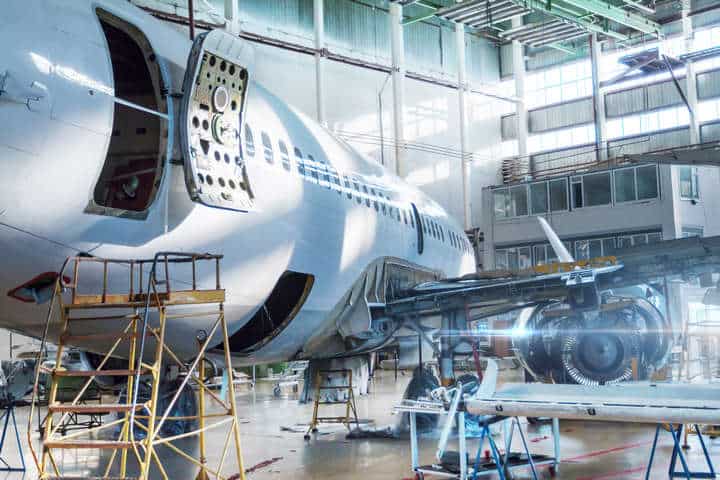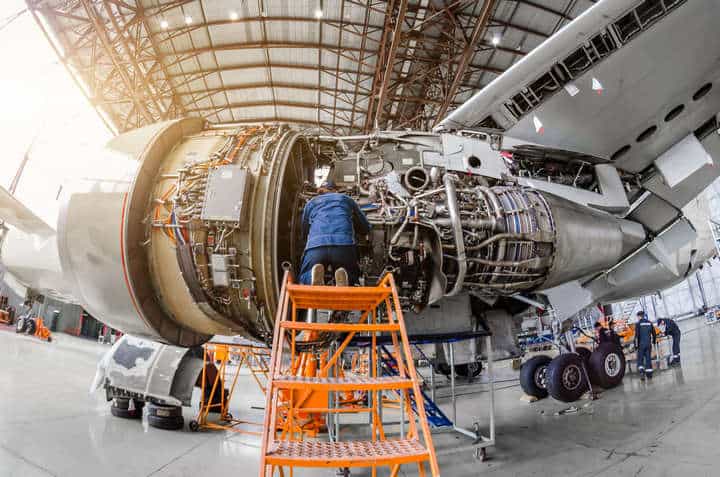You’ve probably heard of news on how technological advancements are slowly changing many industries. Surgeons are now using robotics for more precise operations. Corporate companies are integrating cloud computing into their systems. It makes you wonder, will the aviation sector rely on these technologies in the future as well?

Unfortunately, the media doesn’t touch upon aviation technology as much as they do with other sectors. Most of the news on aviation maintenance technology is found chiefly on certain websites, but rest assured that technological advancements have already affected the aviation sector.
Here are some of the new trends you should expect:
Artificial Intelligence
The aviation sector values safety, among other things, which is why aircraft maintenance is scheduled at regular intervals to ensure that all aircraft are ready to fly. Scheduling aviation maintenance requires prior deliberation, especially since most aviation inspections last for around 100 hours. But that may no longer be the case with artificial intelligence (AI).
With the help of AI algorithms, it’s possible to determine the ideal schedule for aviation maintenance checks considering the flight schedules. Artificial intelligence can also potentially reduce the time spent in creating these schedules. Tests surrounding this technology are going well so far, and it’s only a matter of time before airlines start using this technology.
3D Printing
Since the introduction of 3D printing to the aviation sector, people are starting to wonder if it’s possible to 3D print an entire aircraft. While it’s not yet a realistic endeavor, it does seem to be something that can happen in the future.
3D printing has a massive demand in the aviation maintenance industry since it’s possible to 3D print smaller objects like aircraft parts replacements, which companies will then use for repairs.

Manufacturers also plan on creating more aircraft for the next 20 years, which means the aviation maintenance sector will become a lot busier than they are now. When that time comes, 3D printing technologies will become an even bigger hit as companies will have to look for ways to keep up with the high demand for aircraft parts.
Robotics
Aviation maintenance is a process that requires precision and focus. A single mistake can lead to severe consequences, which is why individuals must be focused at all times. But no matter how skillful they are, they’re bound to make mistakes, and one mistake can lead to a huge problem. Robotics is the aviation sector’s answer to this problem.
Unlike humans, a fully functioning robot doesn’t tolerate basic errors. They can pull off tasks that require precision and accuracy without any problem.
You don’t have to worry about robots taking over your job either. In fact, this technology produces the opposite effect. Once robotics is implemented in every aircraft company, workers no longer have to risk their safety to accomplish complex tasks.
Wireless Sensors
Aircraft maintenance isn’t as simple as people think. It requires the inspection of different key components of an aircraft, such as gearboxes, airframes, and engines.
Most aviation maintenance companies use wired sensors to monitor these components’ conditions, but these sensors’ placement and installation are often time-consuming and costly. When wireless sensors were introduced, it wasn’t surprising to see how wireless sensors immediately became a trend in aviation maintenance technology.
Relying on wireless sensors will result in a lower weight for the aircraft and a simpler wiring structure, all of which contribute to a lower sensor installation and maintenance cost.
Unmanned Aerial Vehicles (UAVs)
Crewless aerial vehicles (UAVs), or drones, are small vehicles controlled by a remote device. Due to its size and ability to fly, it can hover over areas where humans can’t go, bringing up many potential benefits.
UAVs’ particular use is their ability to inspect lightning strike damages, which usually takes around five to six hours to complete. With their help, companies can reduce this time to 30 minutes. It’s also possible to install cameras to these UAVs, giving it the ability to store images and videos, allowing engineers to conduct visual inspections to locate potential damage.
Wrapping Up
While other industries can adapt to the latest technologies rather quickly, aviation companies cannot, or more specifically, don’t. Aviation maintenance is a lot more complex than people think. If they were to adopt newer technologies without prior deliberation, aircraft from 20 to 30 years ago might not keep up.
However, as older aircraft are scrapped, aviation maintenance technology is slowly catching up. It’s only a matter of time before the trends mentioned above become commercially available to all aviation companies.

